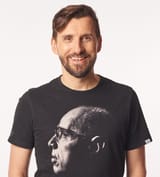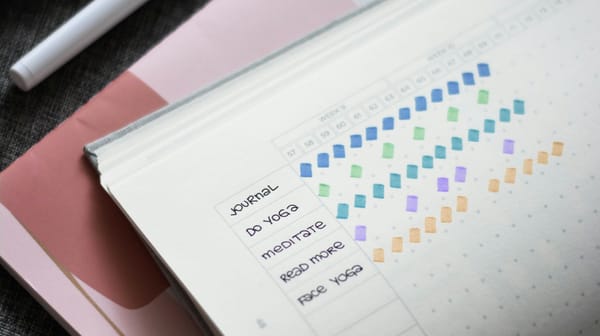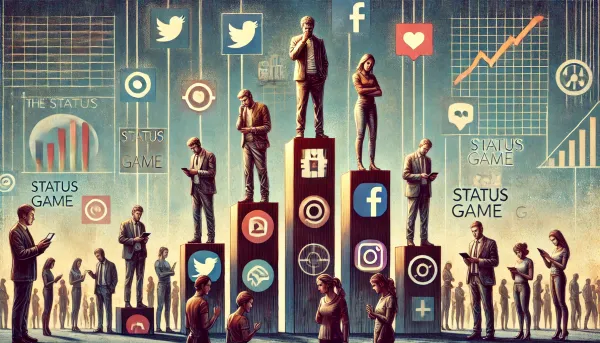Simple decision making framework for everyday use
Decision-making model - my way to save time and attention. FOUR simple principles to follow if you are stuck with decision to be made.

Decision-making model - my way to save time and attention
Here's a thing: last weekend, I found myself looking at a screen trying to make some decision. Half an hour later, I was stuck in the same place!
What's wrong with me?
The thing is, I had such cases in the past. It doesn't have to be something significant. It should be easy. For some of us, it might not be that easy. I talked with someone about it. In general, it is an excellent way to deal with such a problem to speak with someone with a different experience. I learned to deal with it.
Yet, I caught myself doing it again this weekend. Nothing big, but it made me stop and think. The good thing is that I could observe myself doing it (progress!).
Soooooo stupid!
(or at least it is what I thought, catching myself pondering on some simple problem)
I could spend the next 30 minutes trying to sort it out. Instead, I took a piece of paper and broke it down into parts to build a framework for a future. So here it is. Especially for you, my framework to guide the decision-making process was created on a sunny Saturday afternoon.
PRINCIPLE #1 - Action beats no action!
Realize this. Such a decision is rarely a matter of life and death. Most of them don't matter in the long term anyway. Every time! You need to act. The action might be one of two choices:
- Do something about it, or
- Forget about it and move on (yes, it is also action!)
In case you will decide to ACT - do it:
- Saves your time; you made a call and can focus on executing it.
- You are in it for a ride and can observe the result.
If you will decide NOT TO ACT, that's fine, it also:
- Saves your time,
- Free your resources which you need - attention and focus.
You see - in both cases, you won on one thing - you got your time back. It's a win! It sounds that simple, so why I (and you may be) have a problem with doing it?
It is fear coming from two things:
- Fear of missing out on possible good outcome (you don't have it anyway at the moment)
- Fear of losing invested resources (be it time, money, or other thing involved) or the decision's downside.
The thing is - you will not experience good or bad outcomes without doing anything. So there is nothing to worry about unless you will do something! Act and then enjoy the ride!
Easy to say but - "I need more data to make the right call!".
Sure, that sounds like a reasonable way to think. Now look into your past and think:
- How many times, data you've gathered made a much difference (like 2X or 10X)
- How it improved your decision versus the time you spent on getting it?
Forget about it. Suppose you don't have data points to make any judgment (even gut feeling is a judgment). In that case, FINE is not doing anything if you can stop pondering about it and move on.
PRINCIPLE #2 - Constrain yourself in the decision-making process.
If you will decide that you need more data to make a decision:
You've agreed to ACT (do something -> get more information)
Put constraints on yourself in this process.
It is a simple trick and an essential factor. You may underestimate the power of constraints (you can dig around and read about the theory of constraints). The most straightforward constraint is putting the time limit on how much you can spend on doing it or deciding with all information you have at this moment.
PRINCIPLE #3 - Avoid fake actions at all cost
What is fake action? It is something that you take to get you closer to a decision, but it is not doing it. It is a distraction.
Simple example - you want to start a podcast, but you go for a month as the first step for hardware selection.
Stop!
Spend 10 minutes selecting the hardware in your budget and recording it with people.
Fake actions take the form of tools, courses, books you need to read before you are ready to "ACT." From my own experience, avoid it :).
PRINCIPLE #4 - Take one decision to remove other choices
Do you remember Steve Jobs? He was always in a black turtleneck. He decided to remove all other choices on what he is wearing every day, shop, etc. If it is possible, do the same! You are wondering where is a good time to start investing money.
Stop
Decide "I will do it every month, in X amount" and do not check the market statistics every day.
Want to learn swimming? Sign-up for a swimming school for six months to have two lessons every week. Done!
If you are acting, think if you can decide to take one decision to remove other choices.
That's it:
- Action beats no action!
- Constrain yourself in the decision-making process
- Avoid fake activities at all cost
- Take one decision to remove other choices.
Will it always work? Not, but it will help you (and me) save two resources: time and attention.
Here is few points from my "piece of paper" session I've put as a side-note:
- Thinking longer on a problem without new data will not do any good. Drop it or get more data with constraint for how long you will gather it!
- If you are afraid of loss or downside -> ACT with limited resources (invest less money, commit to the small task). You will not lose much, but you will get something in a positive case.
- Do not do "WHAT IF" thought exercises. It doesn't do any good for you unless you have new data points, but it is not a "WHAT IF" scenario.
- Take action always on what YOU believe will happen. Other people's opinions are data points, but you need to know what will happen as an outcome.
- Look for decisions with possible positive, long-term outcomes. Optimize for long-term effect in time, not short-term gains.
- Take actions to build on your previous decisions. The compounding effect is real power, not only in the economy.
- Do not look back and check what happened if YOU WOULD ACT in a certain way and regret your action! No reason for it! You can get back there! You can learn, but there is no point in regretting it.
Next time I will spot myself spending time on decision making, I will revert to this process. I hope you will find it helpful.




